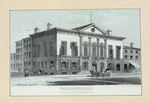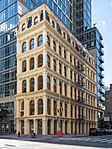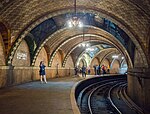280 Broadway

280 Broadway – also known as the A.T. Stewart Dry Goods Store, the Marble Palace, and the Sun Building – is a historic building located between Chambers and Reade Streets in the Civic Center district of Manhattan, New York City. Built in 1845-1846, it was the first commercial building in the Italianate style in New York City, and is considered the site of one of the nation's first department stores. 280 Broadway was designed by John B. Snook of Joseph Trench & Company, with later additions by other architects. It was built for the A. T. Stewart Company, which opened New York's first department store in it. It later housed the original New York Sun newspaper (1833–1950) and is now the central offices for the New York City Department of Buildings.The building was declared a National Historic Landmark in 1965, and was designated a New York City landmark in 1986.
Excerpt from the Wikipedia article 280 Broadway (License: CC BY-SA 3.0, Authors, Images).280 Broadway
Broadway, New York Manhattan
Geographical coordinates (GPS) Address Website External links Nearby Places Show on map
Geographical coordinates (GPS)
| Latitude | Longitude |
|---|---|
| N 40.714166666667 ° | E -74.006111111111 ° |
Address
Sun Building
Broadway 280
10007 New York, Manhattan
New York, United States
Open on Google Maps










